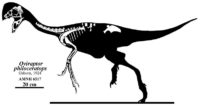By Creation Moments A recent science article in the UK’s Telegraph newspaper suggested that grizzly bears may have dropped their carnivorous ways in favor of a life of eating berries. Apparently, the streams and rivers on Alaska’s Kodiak Island are replete with salmon. read more …read more Source: Creation Moments
By Creation Moments There was a certain hydroelectric dam built in Brazil. This involved the flooding of a region of countryside, which left some populations of geckos isolated. Gradually, the populations of other lizards in the area died out. After about 15 years, it was noticed that the geckos in the area had “developed” larger mouths in order to eat large insects that would formerly have been eaten by larger lizards. read more …read more Source: Creation Moments
By Sarah Chaffee On this episode of ID the Future, Tod Butterfield reads from the beginning of Heretic: One Scientist’s Journey from Darwin to Design, by Jonathan Witt and Matti Leisola. It’s an exciting new book that tells the story of how one major European scientist who applied the maxim, “Scientists are supposed to investigate mysteries with an open mind; not assume an explanation from the outset.” He came to see that arguments insisting on purely material causes in nature are based on assumptions, not evidence. He noted how history shows that scientific consensus doesn’t always mean scientific truth. And [More]
By Creation Moments What happens if a man tries to walk on water? The answer is that his feet would sink into the water. read more …read more Source: Creation Moments
By Creation Moments The purpose of an advertising billboard would be to grab the attention of the passerby – or, in today’s world, the person driving by. One way of attracting the attention of prospective customers might be to use bright colors. Suppose that the more brightly colored paint was more expensive. read more …read more Source: Creation Moments
Flood secrets long buried reveal fascinating confirmation for the Genesis account. Where did the water come from to Flood the entire earth? Did the plates move rapidly and break apart during the Flood? Was there really a Pangea? Where did all of the water go post-Flood? And why was there an ice age? Listen: The Institute for Creation Research
Creation scientists say dinosaurs and man co-existed. The Bible also teaches this as historical fact. Should we find human and dinosaur fossils together in the same rock layers? Listen: The Institute for Creation Research
Oil is in the news almost every day due to fluctuating prices and controversial fracking. How does oil fit into the Bible? Was oil made in the Flood? How does this important commodity influence a biblical worldview? Other episodes in this series: Summary of Megasequences across North America and the Global Flood Summary of Megasequences across Africa and the Pre-Flood World Dinosaur Evolution and the Fossil Record Catastrophic Plate Tectonics and the Ice Age Listen: The Institute for Creation Research
Logic is the study of the principles of correct reasoning. It can teach us to think properly and construct rational arguments—valuable skills for defending the Christian faith. Christians should learn how to spot logical fallacies when conversing with people who challenge their beliefs. Listen: The Institute for Creation Research
Summary of Megasequences across Africa and the Pre-Flood World – The Institute for Creation Research
Dr. Clarey shifts focus from North America to Africa. How does the African continent show a similar geological story? How can we know the Flood was not merely localized around the Black Sea? And what impact does this have on the Christian faith? Listen: The Institute for Creation Research
Many wonder if the global Flood was real. Can we trust Genesis? What really happened during this worldwide, watery catastrophe? What do rock layers across North America reveal? Listen: The Institute for Creation Research
Is dinosaur evolution a fable? Secularists claim that the terrible lizards evolved from ancestors. But what do the fossils show? Are they truly millions of years old? Do dinosaurs disprove the Bible? Listen: The Institute for Creation Research
Mostly, I liked math (or maths, as we called it) when I was at high school. But one aspect of math was tedious. This was when special numbers had to be looked up in boring books called log tables. These books contained not only logarithms but also the trigonometric functions – sines, cosines and tangents. Today’s students simply press a button on their scientific calculators, but we had to look with painstaking concentration through page after page of figures until we had worked out the value required. A clay tablet, called Plimpton 322, was discovered in the early 1900s [More]
What is the origin of dinosaurs? Can we trust the fossil record? Questions abound regarding these famous “thunder lizards.” But secular textbooks lack strong, scientific answers. Where should Christians go for solid dinosaur science? Listen: The Institute for Creation Research
Christians must build their worldview on the whole Bible. But there’s no need to throw out science. Science harmonizes well with the biblical message—right down to the details. How does the evidence lead to a recent, global Flood? Why is the evolutionary timescale false? And what does the geologic column really reveal about Earth history? Listen: The Institute for Creation Research
Everyone has a worldview. Evolutionism and Christianity are competing worldviews; Christianity and science are not. Do you know why you believe what you believe? Are you ready to defend your faith “with meekness and fear”? Listen: The Institute for Creation Research
In 1 Kings 7:23, there is an unusual account of how Solomon had the sea of bronze made. We read that is was “ten cubits from brim to brim, and five cubits high, and a line of thirty cubits measured its circumference”. Many atheists and skeptics have used this verse to criticize the Bible. They suggest that the inaccuracy suggested by the dimensions given is inconsistent with a Book claiming to be without error. They suggest that a diameter of 10 cubits and circumference of 30 cubits is impossible, as the relationship between these two values is governed by [More]
Many Christians compromise the creation account in order to accommodate Scripture with secular science. But an old earth means death really isn’t the penalty for sin. What does the Bible say about the age of the earth? And how young is the earth from a life science perspective? Listen: The Institute for Creation Research
There are 20,000 known species of bees! These industrious insects possess incredible skills for creating orderly and efficient honeycombs. How are bees unique? And what can we learn about the Creator’s design from these winged workers? Listen: The Institute for Creation Research
By Creation Moments James says that “every good and perfect gift is from above…” Perhaps I am twisting Scripture a little by including coffee in this category. I have to confess – I love coffee. So I was delighted to read on the Science Daily website recently that the intake of coffee could contribute to longer life! If that is so, I could be looking forward to living as long as Methuselah! read more …read more Source: Creation Moments
By Sarah Chaffee In this episode of ID the Future, Tod Butterfield interviews Michael Egnor, pediatric neurosurgeon at Stony Brook University, about the science-destroying practice of Lysenkoism. Dr. Egnor discusses Trofim Lysenko, a Soviet agronomist who for several decades in the 20th century was allowed to use the power of the state to enforce belief in Lamarckianism in the Soviet Union. The government punished people who questioned the reigning view, and the results were catastrophic. Today the term Lysenkoism applies to any use of government power to enforce scientific orthodoxy. It need not mean the Gulag; it could involve, for [More]
By Creation Moments Current evolutionary thought suggests, as most people are aware, that birds evolved from therapod dinosaurs. Therefore, evolutionary scientists must find their evidence, not only for the evolution of the skeletal structure of birds and features such as feathers, but many other behavioral characteristics. read more …read more Source: Creation Moments
By Creation Moments Everybody loves pandas, don’t they? We must love them because we are trying to save them from extinction, with some success; pandas have been downgraded from endangered to vulnerable. Apparently, their habitat in China is expanding, so that the likelihood of those adorable black-and-white icons of world wildlife may not disappear after all. read more …read more Source: Creation Moments
Most students are taught that the universe is 13.8 billion years old. But the Bible teaches a much younger age. In this episode, we’ll discuss the many lines of evidence confirming that the universe is, in fact, only thousands of years old. Read More: The Institute for Creation Research
By Creation Moments I used to love it when my elementary school teacher read stories to the class. She had some favorite stories. One of her favorite collections was Rudyard Kipling’s Just So Stories. The idea of each story was to give a fictional account of how certain features of various animals came to be. Of course, Kipling was not presenting a scientific thesis. He expected his stories to be received as works of imagination. read more …read more Source: Creation Moments
By Nathan Jacobson On this episode of ID the Future, hear from Michael Flannery, historian and expert on Alfred Russel Wallace, the co-founder of the theory of evolution. Dr. Flannery responds to claims of new-found evidence that Darwin and Wallace stole the theory of natural selection from Patrick Matthews, explaining why these claims have little credibility or historical foundation. Your browser does not support playing Audio, please upgrade your browser or find our podcast on podOmatic Download Episode …read more Source: id the future
By Creation Moments Three people went out to dig for rock. The rocks in their claim were rich in minerals, such as malachite – the principle ore of copper. read more …read more Source: Creation Moments






























